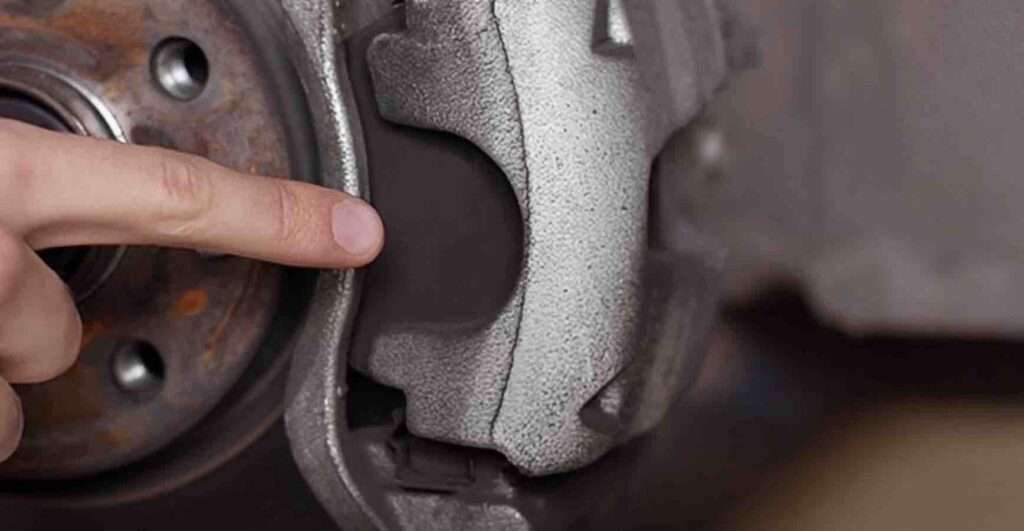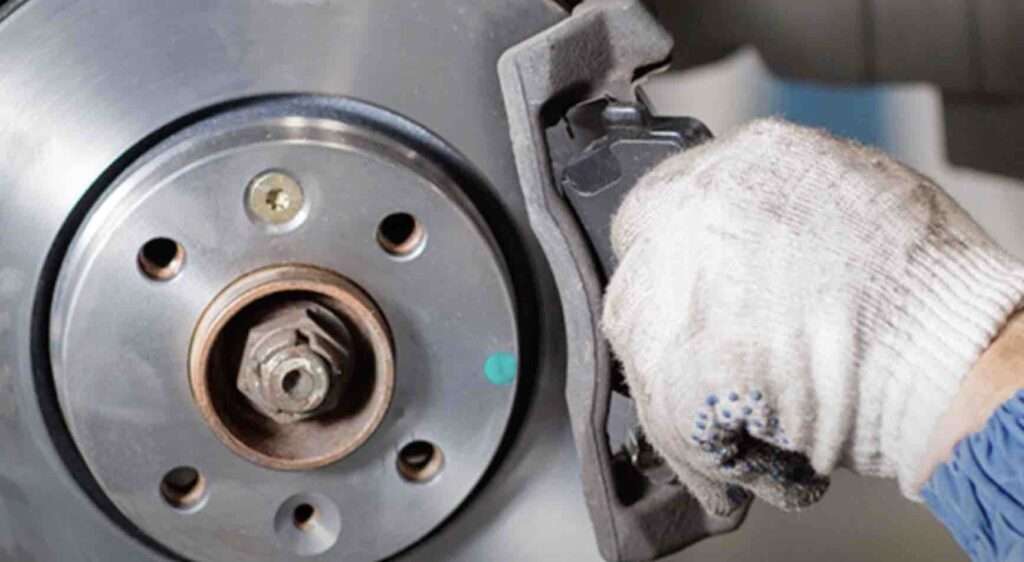Last updated on March 21st, 2024 at 12:39 pm
Are you hearing squeals when you hit the brakes? Or perhaps your car is taking just a little longer to stop than before? These could be signs that it’s time for a brake pad change. Ignoring this could lead to dangerous situations or more costly repairs down the road. But don’t worry, I’ve got your back in this video because we will be looking at How to Replace Brake Pads, and the Cost of replacing as well as help you identify when to consider replacing the old brake pads with new ones!
To get started first I like to ask that, you hit the like button, and subscribe to our channel, if you are new here and have not already subscribed, and if you have done all that, thank you, and let’s move on to fixing your brake pads.

What are Brake Pads and their Role in Vehicle Safety?
Brake pads might seem like a small part of your vehicle, but they hold a huge responsibility. Let’s break it down into simpler terms:
- Imagine trying to slow down a bicycle by pressing your shoes against the spinning wheel. Brake pads do something similar but in your car. They press against the brake discs to slow down or stop your vehicle. Essentially, they act like your shoe, gripping those spinning wheels to bring your car to a safe halt.
- Now, let’s talk about why brake pads are so vital to safety. Without effective brake pads, your car’s stopping distance increases dramatically. This can be the difference between stopping safely at a red light and being involved in a collision. Brake pads are critical to controlling your vehicle, especially in emergency situations where you need to stop suddenly.
- But not all brake pads are created equally. There are different types, including ceramic, semi-metallic, and organic brake pads. Each type has its unique characteristics, catering to different driving styles and vehicle types. Ceramic pads are known for their durability and quiet performance, while semi-metallic ones offer excellent heat dissipation. Organic pads, made of non-metallic fibers, are softer and often quieter but may wear quicker.
Now let’s look at how to recognize when it’s time to replace your brake pads, and how you can replace them yourself!

Identifying the Need for Brake Pad Replacement.
now that you know what brake pads do and why they’re so important, but how do you know when it’s time to replace the old brake pad for a new one?
Well first, like many other car components Brake pads have a lifespan which is typically, between 30,000 to 70,000 miles, depending on your driving habits and the type of brake pads used. Frequent hard braking, for instance, can cause them to wear out faster as against more careful braking and less frequent use.
Secondly, there will be a few signs as an indication that it might be time to replace your brake pads. One of the most common signs or symptoms is a high-pitched squealing noise when you apply the brakes. This noise comes from a small device called a wear indicator that’s designed to alert you when your brake pads are low or worn out. Other signs include longer stopping distances, vibrations in the brake pedal, or even a warning light on your dashboard. Additionally, excessive brake dust on your wheels could be another indication of worn-out brake pads.
My tips here is that you regularly inspect brake pads for wear and check if they are thinner than 1/4 inch. This can often be done by looking through the spokes of your car’s wheel. If you’re uncertain, many auto service centers will do a brake inspection for free so just visit one on a regular.
Remember, your brake pads are vital for your safety and that of others while driving out there on the road so, taking action when you notice any of these signs can save your life and other passengers. Up next, is the costs involved in replacing brake pads.
So what is The Average Cost of Brake Pad Replacement?
Well, the cost of replacing your brake pads can depend on a few factors. The make and model of your vehicle, the type of brake pads you choose, and labor costs, if you decide to have them replaced professionally all, contribute to the overall cost.
On average, for a typical vehicle, you could expect to pay between 100$ and 300$ per axle. This includes both parts and labor. However, high-end cars or specialized brake pads may cost significantly more.
Regular brake pad maintenance can offer long-term savings. Driving with worn-out brake pads can cause damage to other parts of your braking system, like rotors, which are more expensive to replace. More importantly, it ensures your safety on the road, which is priceless.
How to Replace Brake Pads: Step-by-Step Guide
First, To install new brake pads in a vehicle, the following tools and materials will be necessary: a lug wrench,
- c-clamp or caliper piston compressor,
- wheel chocks;
- Brake caliper grease
- new brake pads,
- Socket wrench set
- Jack stands
Remember, safety first! Make sure the vehicle is secure before beginning the process. Always wear safety gear, such as gloves and safety glasses, during the process.
Here’s the basic process of brake pad replacement:
- First start by parking your vehicle on an even surface and engaging the parking brake,
- Then use wheel chocks to block off tires you won’t be working on with wheel chocks.
- You now need to use the jack stand to raise the tire you will be working on stands at least six inches off of the ground.
- Use your lug wrench to loosen the lug nuts and remove the wheel.
- Locate the brake caliper and unbolt the brake caliper from its mounting bolts to access the brake pads. You have to first carefully uncouple the caliper from its mount on the rotor before you can remove the old brake pads from the car caliper.
- Remove the car’s old brake pads from the caliper.
- Now check your car caliper and brake pads for any damage. If one or both of them have gone bad you will need to replace the defaulted one which in this case, we are focusing on the brake pads
- Apply a thin coating of brake caliper grease to the backs of the new brake pads
- Then you have to now install the new brake pads into the caliper.
- Move to installing the caliper in the rotor and tightening bolts to secure them to the rotor.
- Reassemble and reinstall your car wheels and lug nuts,
- And now you can lower your vehicle by lowering the jack stands.
After installing new brake pads, it’s essential that they be adjusted to appropriately bed them in, by heating and cooling them until they adhere firmly to rotors. Follow these steps for bedding in your newly installed brake pads:
- Brake hard and drive at 30 miles an hour;
- Repeat Step 1 five times
- Then allow the brakes to cool for at least 10 minutes
- Repeat steps 1 to 3 again
- You want to continue this procedure for about 500 km so the brake pads to fully set into the rotor.
If you’re uncomfortable doing this task or if your vehicle has a complex brake system, it may be better to hire a professional to ensure it’s done correctly.
So let’s recap.
Basically, covered what brake pads are and why they’re crucial to your safety. We’ve also discussed how to identify when it’s time for a replacement, the cost associated with it, and a basic guide on how to replace them yourself.
Remember, regular brake maintenance is not just a matter of cost-efficiency but of safety. Keep an eye on your brake pads and stay on top of their maintenance to ensure safe driving.
We’d love to hear about your experiences with brake pad replacement or if you have any questions. leave them in the comments section below.
Reasons For Car Not Accelerating When Pressing Gas













